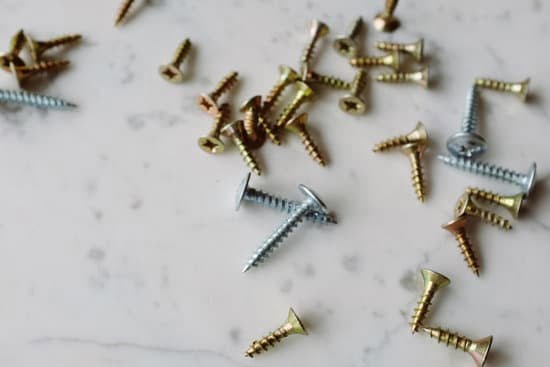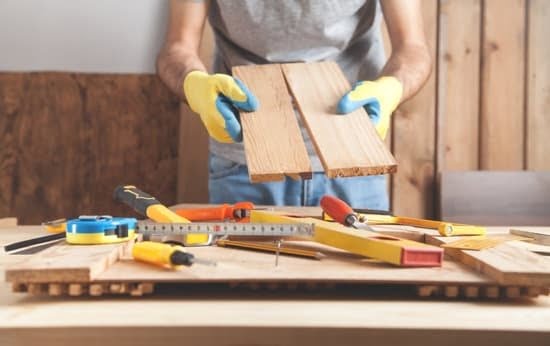Are you struggling with water marks on your woodwork and wondering how to remove them? Water marks can be frustrating to deal with, but with the right knowledge and supplies, you can effectively remove them and prevent future damage.
In this article, we will explore the different types of water marks, their causes, and provide a step-by-step guide on removing them from woodwork. We will also share some tips for preventing water marks and alternative methods for removing them.
Water marks on woodwork can be caused by a variety of factors, including spills, condensation, or prolonged exposure to moisture. Understanding the type of water mark and its cause is crucial in determining the best approach for removal. By learning about the different types of water marks and their causes, you can take the necessary steps to prevent further damage to your woodwork.
Before tackling the task of removing water marks from woodwork, it’s important to gather the right supplies. Having the appropriate tools and cleaning solutions will make the process much more effective and efficient. We will discuss the essential supplies needed for removing water marks and provide recommendations for high-quality products that yield great results. Stay tuned as we explore how you can efficiently remove water marks from your woodwork and restore its natural beauty.
Understanding the Types of Water Marks and Their Causes
Water marks on woodwork can be a frustrating sight, but understanding the types of water marks and their causes can help in effectively removing and preventing them. There are two main types of water marks on woodwork: white water marks and black water marks. White water marks are caused by moisture trapped in the finish, while black water marks are typically a result of prolonged exposure to water or other liquids.
White water marks occur when moisture gets trapped in the finish of the wood, causing it to turn white or cloudy. This can happen when a hot dish is placed directly on the woodwork without a protective barrier, or when condensation forms on drinking glasses that are set down on the surface.
On the other hand, black water marks are more severe and are caused by prolonged exposure to liquid, such as from a leaky plant pot or spillage that goes unnoticed for an extended period.
To effectively remove these water marks from woodwork, you will need some basic supplies including non-gel toothpaste, mayonnaise, baking soda, and clean cloths. These household items can be used as gentle abrasives to lift the water mark from the surface of the wood without causing further damage. It is important to note that before attempting any removal method, it’s always best to test in an inconspicuous area first to ensure it won’t further damage the wood.
It’s also important to consider why these water marks occurred in the first place and take steps to prevent them from happening again. Using coasters for drinks and trivets for hot dishes can help prevent future white water marks, while addressing leaks and spills promptly can prevent black water marks. Regular maintenance and cleaning of woodwork will also go a long way in preventing these unsightly blemishes from appearing again.
| Types of Water Marks | Causes |
|---|---|
| White Water Marks | Moisture trapped in finish |
| Black Water Marks | Prolonged exposure to liquid |
Supplies Needed for Removing Water Marks From Woodwork
Water marks on woodwork can be unsightly and frustrating to deal with. Fortunately, with the right supplies and techniques, removing these marks is a manageable task. Depending on the severity of the water mark, you may need a few specific items to successfully restore your woodwork to its original condition.
One essential item for removing water marks from woodwork is a clean, soft cloth. Microfiber cloths or old t-shirts work well for this purpose as they are gentle on the wood surface. You will also need some type of wood cleaner or wood polish to help lift the water mark and restore the finish of the wood. Be sure to choose a product that is safe for use on your specific type of wood.
In addition to a cloth and cleaning product, you may also need fine-grit sandpaper if the water mark has penetrated deeply into the wood. This will allow you to gently sand away the affected area and smooth out any discoloration caused by the water.
Furthermore, if the water mark has caused any damage to the protective finish of the wood, you may need a small brush or applicator to apply a new coat of finish once the mark has been removed.
| Supplies Needed | Usage |
|---|---|
| Clean, soft cloth | Gentle wiping and polishing |
| Wood cleaner or polish | Lift water marks and restore finish |
| Fine-grit sandpaper | To sand away deep water marks and discoloration |
Step-by-Step Guide on Removing Water Marks From Woodwork
Identifying the Type of Water Mark
Before attempting to remove water marks from woodwork, it’s essential to identify the type of water mark present. There are two common types of water marks: white water marks caused by moisture trapped in the finish, and dark water marks caused by water penetrating through the finish and into the wood. Understanding the type of water mark will determine the best approach for removal.
Gathering the Necessary Supplies
To effectively remove water marks from woodwork, you will need a few supplies. These include a clean cotton cloth, fine-grade steel wool, non-gel toothpaste, mineral spirits, and furniture polish or wax. It’s important to gather all supplies before starting the removal process to ensure a smooth and efficient experience.
Step-by-Step Guide for Removing Water Marks
- Begin by gently rubbing the affected area with a clean cotton cloth to see if the water mark is superficial.
- If the water mark persists, lightly rub the area with fine-grade steel wool in the direction of the wood grain. This can help to remove shallow white water marks without causing damage to the woodwork.
- For more stubborn white water marks or dark water marks, apply a small dab of non-gel toothpaste onto the area and gently rub in a circular motion with a clean cotton cloth.
- If using toothpaste does not yield desired results, dampen a clean cotton cloth with mineral spirits and lightly rub over the affected area until the water mark begins to fade.
- Once the water mark has been successfully removed, apply a thin layer of furniture polish or wax to restore shine and protect against future water damage.
Tips for Preventing Water Marks on Woodwork
When it comes to woodwork, preventing water marks is always better than having to remove them later on. Here are some tips for preventing water marks on woodwork:
- Use coasters and placemats: Placing coasters and placemats under drinks and hot dishes will prevent water rings from forming on the woodwork.
- Wipe up spills immediately: Whenever there is a spill on woodwork, it is important to wipe it up immediately to prevent it from seeping into the wood and causing water marks.
- Apply protective coatings: Using protective coatings such as varnish or wax can add an extra layer of protection to your woodwork, making it less susceptible to water damage.
In addition to these preventative measures, proper maintenance of your woodwork is essential in keeping it free from water marks. Regular cleaning and dusting can help keep the surface of the wood dry and free from any potential moisture damage. Additionally, inspecting your woodwork for any signs of water damage and addressing them promptly can help prevent water marks from becoming a larger issue.
Overall, taking proactive steps to prevent water marks on woodwork can save you time and effort in the long run. By incorporating these tips into your regular routine, you can maintain the beauty and integrity of your woodwork for years to come.
Lastly, in case you are unable to prevent water marks from forming, refer back to the article’s Step-by-Step Guide on Removing Water Marks from Woodwork for effective solutions.
Alternative Methods for Removing Water Marks From Woodwork
Woodwork is a beautiful addition to any home, but water marks can quickly diminish its appeal. If you have discovered water marks on your woodwork, don’t worry – there are several alternative methods for removing them and restoring the natural beauty of your wood surfaces.
Alternative Methods for Removing Water Marks From Woodwork
When it comes to removing water marks from woodwork, there are a few alternative methods that may be effective. Here are some options to consider:
- Using mayonnaise: Apply a thick layer of mayonnaise to the water mark, covering it completely. Let it sit for several hours or overnight, then wipe it off with a clean, dry cloth.
- Applying toothpaste: Gently rub non-gel toothpaste onto the water mark using a soft cloth. Wipe away the toothpaste with a clean, damp cloth and dry the area thoroughly.
- Using baking soda: Create a paste by mixing equal parts of baking soda and toothpaste. Gently rub the paste onto the water mark in a circular motion, then wipe it away with a damp cloth.
These alternative methods offer simple and cost-effective ways to remove water marks from woodwork without causing damage to the surface.
If you’re dealing with particularly stubborn water marks or if these alternative methods don’t provide satisfactory results, consider seeking professional help or investing in specialized wood cleaning products. Remember that prevention is key to keeping your woodwork looking its best, so be sure to follow our tips for preventing water marks on woodwork to maintain its pristine condition.
Importance of Regular Maintenance for Woodwork
Regular maintenance of woodwork is essential for keeping it in good condition and preventing water marks from forming. Proper care and attention can go a long way in maintaining the beauty and integrity of your wood furniture, floors, and other wooden surfaces. In this section, we will discuss the importance of regular maintenance for woodwork and provide some helpful tips for keeping water marks at bay.
Inspecting and Cleaning Woodwork
One of the key aspects of regular maintenance for woodwork is to inspect it regularly for any signs of water damage or discoloration. It’s important to clean the wood surfaces regularly with a gentle cleaner and a soft cloth to remove any dirt, grime, or moisture that may have accumulated. Avoid using harsh chemicals or abrasive materials that can damage the wood finish.
Applying Protective Finishes
Another important aspect of maintaining woodwork is applying protective finishes such as wax, varnish, or sealant to create a barrier against moisture. These finishes not only enhance the appearance of the wood but also provide an extra layer of protection against water marks and other types of damage. Be sure to follow the manufacturer’s instructions when applying these finishes to ensure proper coverage and longevity.
Monitoring Humidity Levels
Controlling indoor humidity levels is crucial for preventing water marks on woodwork. Excessive moisture in the air can lead to condensation on wooden surfaces, causing unsightly water marks. Use a dehumidifier if necessary, especially in areas with high humidity levels. Additionally, consider using coasters, placemats, or trivets under glasses and hot dishes to prevent water stains on wooden tabletops and countertops.
By taking these proactive measures as part of your regular maintenance routine, you can significantly reduce the risk of water marks forming on your precious woodwork. Remember that prevention is always better than cure when it comes to preserving the beauty and longevity of your wooden furniture and surfaces.
Conclusion and Final Thoughts on Keeping Woodwork Water Mark-Free
In conclusion, removing water marks from woodwork can be a simple and straightforward process when armed with the right knowledge and supplies. By understanding the types of water marks and their causes, as well as having the necessary tools and materials at hand, you can effectively restore your woodwork to its original condition.
The step-by-step guide provided in this article offers a practical approach to removing water marks, while the tips for prevention and alternative methods offer additional options for maintaining woodwork in the long run.
It is important to remember that regular maintenance is key to keeping woodwork water mark-free. By implementing preventative measures such as using coasters, cleaning up spills promptly, and applying protective finishes, you can minimize the risk of water marks forming on your wood surfaces. Additionally, staying proactive with routine cleaning and upkeep will help preserve the beauty and integrity of your woodwork for years to come.
Ultimately, by familiarizing yourself with how to remove water marks from woodwork and taking proactive steps to prevent them from occurring, you can ensure that your wood surfaces remain in top condition. With diligence and proper care, you can enjoy the natural beauty of your woodwork without the unsightly presence of water marks.
Frequently Asked Questions
How Do You Get Water Marks Off Wood?
Water marks can be removed from wood by using a mixture of equal parts vinegar and olive oil. Gently rub the mixture into the stain and let it sit for a few minutes before wiping it off.
What Is the Best Water Mark Remover for Wood?
The best water mark remover for wood is a solution of baking soda and toothpaste. Mix the two together to form a paste, then gently rub it onto the water mark. Wipe it away with a clean cloth.
Are Water Stains on Wood Permanent?
Water stains on wood are not necessarily permanent. With the right techniques and products, they can often be removed or at least minimized. It’s important to act quickly to prevent the water from causing further damage to the wood.

Hi everyone! I’m a woodworker and blogger, and this is my woodworking blog. In my blog, I share tips and tricks for woodworkers of all skill levels, as well as project ideas that you can try yourself.





